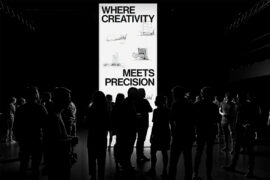The tea ceremony is an important part of Japanese culture; it is one of the many traditional disciplines that the Japanese practise and it can take several years to perfect this art. Known as “chado” (translated as the ‘way of the tea’) the tea ceremony is not just about drinking tea – it is a meditative and thoughtful experience.

January 21st, 2015
We visited the Joukeian tea house in Kyoto where the beautiful Soukou Matsumoto hosted us. It was important that we arrive on time, but not early, as the entry is sprinkled with water in preparation for our visit. The tea house itself is designed around the procedure of the ceremony and there is an entry with different surfaces for different footwear; stone for street shoes, timber for street socks, tatami for indoor socks.
We are greeted and left in a reception area for a few minutes whilst our host finishes her preparations. We are then escorted down a long screened hallway and into the tea room overlooking a traditional tea garden. The tea ceremony usually occurs in two parts – the first part is about preparing the coals for the iron teapot and heating the water. The second part, which we participate in, is about the preparation and drinking of the tea.
Depending on the time of year or national celebration, a variety tea is used. The ritual itself also changes according to the season. We are served sweets on paper first; this is to counteract the bitterness of the tea. And rather than add water to leaves, the tea is in powdered form and added to the water. The water and tea are mixed in a very precise order and manner, and the only way I could think of to describe the flavour was that it was ‘soft’. It is winter in Japan at the moment, and perhaps the ‘softness’ of the tea is to contrast with the harshness of the cold weather.
Each movement and action during this ceremony is definite and must be performed exactly the same way every time, the way it has been since the 9th century. Being in Kyoto, one of the most traditional parts of Japan, kneeling on tatami mats and overlooking Soukou Matsumoto’s exquisite tea garden, we can’t help but be transported back to a time when life was much simpler and much slower.
To follow Angela and Stephen’s journey through Japan go to instagram @futurespacedesign @indesignlive and look out for the hashtags #futurespacetravels #indesigntravels
JOUKEIAN
joukeian.gotohp.jp
INDESIGN is on instagram
Follow @indesignlive
A searchable and comprehensive guide for specifying leading products and their suppliers
Keep up to date with the latest and greatest from our industry BFF's!

For Aidan Mawhinney, the secret ingredient to Living Edge’s success “comes down to people, product and place.” As the brand celebrates a significant 25-year milestone, it’s that commitment to authentic, sustainable design – and the people behind it all – that continues to anchor its legacy.

A curated exhibition in Frederiksstaden captures the spirit of Australian design

London-based design duo Raw Edges have joined forces with Established & Sons and Tongue & Groove to introduce Wall to Wall – a hand-stained, “living collection” that transforms parquet flooring into a canvas of colour, pattern, and possibility.
Interior Equipment was established by Cameron Wallbridge over 5 years ago as a specialist company providing custom-made rugs and carpets to Brisbane interiors.

In 2017, Instyle is celebrating 30 years of trend setting fabric design. We were lucky enough to sit down with founder Michael Fitzsimons to talk about the past and future of the great brand.
The internet never sleeps! Here's the stuff you might have missed

Dr Piers Taylor – award-winning British architect, BBC presenter and founder of Invisible Studio – returns to Australia to deliver a keynote at the inaugural Glenn Murcutt Symposium.

Director Ian Briggs is one of the longest serving members of the Plus team and – with a milestone rebrand complete and a Sydney event just yesterday – he walks us through the state of play at the practice in 2025.